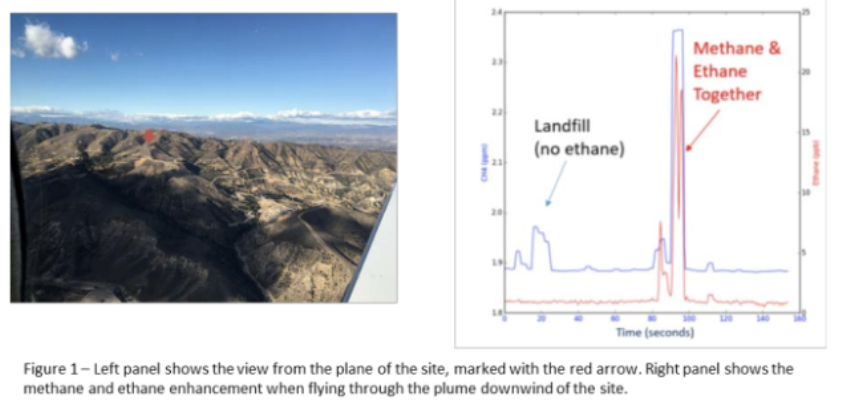
© California Air Resources Board
Outside of a San Fernando Valley neighborhood northwest of Los Angeles, Southern California Gas Company sprung a leak in one of its natural gas wells on October 23.
Just last night at a Los Angeles City Council meeting, the CEO of the private utility said that it could be three to four months before SoCal Gas can plug the underground leak,
which has sent tens of thousands of kilograms of methane per hour seeping up into the air.According to Reuters, SoCal Gas is one of the biggest gas utilities in the country. Its natural gas storage field at Aliso Canyon is the second biggest storage area in the country after a location in Montana.
The gas leaking up into the air above the well is primarily composed of methane, "a potent greenhouse gas," the California Air Resources Board (CARB) wrote in a preliminary estimate of emissions published on November 20. "The global warming impact from methane is 25 times and 72 times that of CO
2, for equal amounts by weight, over a 100 year and 20 year timespan, respectively," the report added. "Due to methane's powerful impact and short life compared to other gases, it represents an important element in reducing the near-term effects of global warming."
Methane is odorless, but utilities often add chemicals to it to make it smell like rotten eggs in order to help detect leaks.
Residents of nearby neighborhoods have complained of headaches, nausea, and nosebleeds from the smell. Although the Los Angeles County Department of Health has said that the leak does "not pose a health concern to residents in the area," SoCal Gas told the LA City Council on Tuesday that it would relocate hundreds of families in neighboring communities to temporary housing.
The Los Angeles Times spoke to one family of five that opted to be relocated—they were set up in a single room in a Best Western in Westlake.
The leak appears to stem from a 7-inch pipe that feeds a well 8,500 feet under the ground.
The leak itself appears to be "several hundred feet" below the surface,
according to KTLA 5. The
Los Angeles Times says SoCal Gas has made six unsuccessful attempts to repair the leak. Now, SoCal Gas says the only thing that can be done is to drill a relief well and seal off the leaking well permanently. The company said it would start construction on the relief well this week, but it could take many months to complete.
In the meantime,
CARB sent planes with methane sensors (PDF) flying over the leak on two separate occasions in November. It first found that the well was leaking 44,000 kilograms of methane per hour (plus or minus 5,000 kilograms). On the second occasion, it found that the well was leaking 50,000 kilograms of methane per hour (plus or minus 16,000 kilograms).
CARB noted that if the number holds relatively true, "the Aliso Canyon gas leak would have added approximately
one-quarter to the regular statewide methane emissions from October 23 to November 20." Still, it cautions that the greenhouse gas leak numbers are preliminary and don't represent the constant flow of the gas leak, which could be more or less at any given time than what has been shown by CARB's measurements. Nevertheless,
"the relative magnitude of emissions from the leak compared to other sources of methane in the State underscores the urgency of stopping the gas leak," CARB wrote. "This comes on top of problems caused by odor and any potential impacts from exposure."
Ars contacted SoCal Gas and CARB for comment and has yet to receive a response.
I wonder if it's sour? 58.85 million standard cubic foot per day. That is a good well if it were under control but a really, really bad one to have lost control over. If it is a sour well (contains H2S) then this blow out will kill everything for miles down wind.
The numbers used to estimate the gas flow are given in mass (Kg) rather than volume (M3) to make you feel better about the situation. Gas density is about 0.72 Kg/M3 at surface pressure and 50,000 Kg's is about 69,400 M3/Hr (2,452,083 Ft3/Hr).